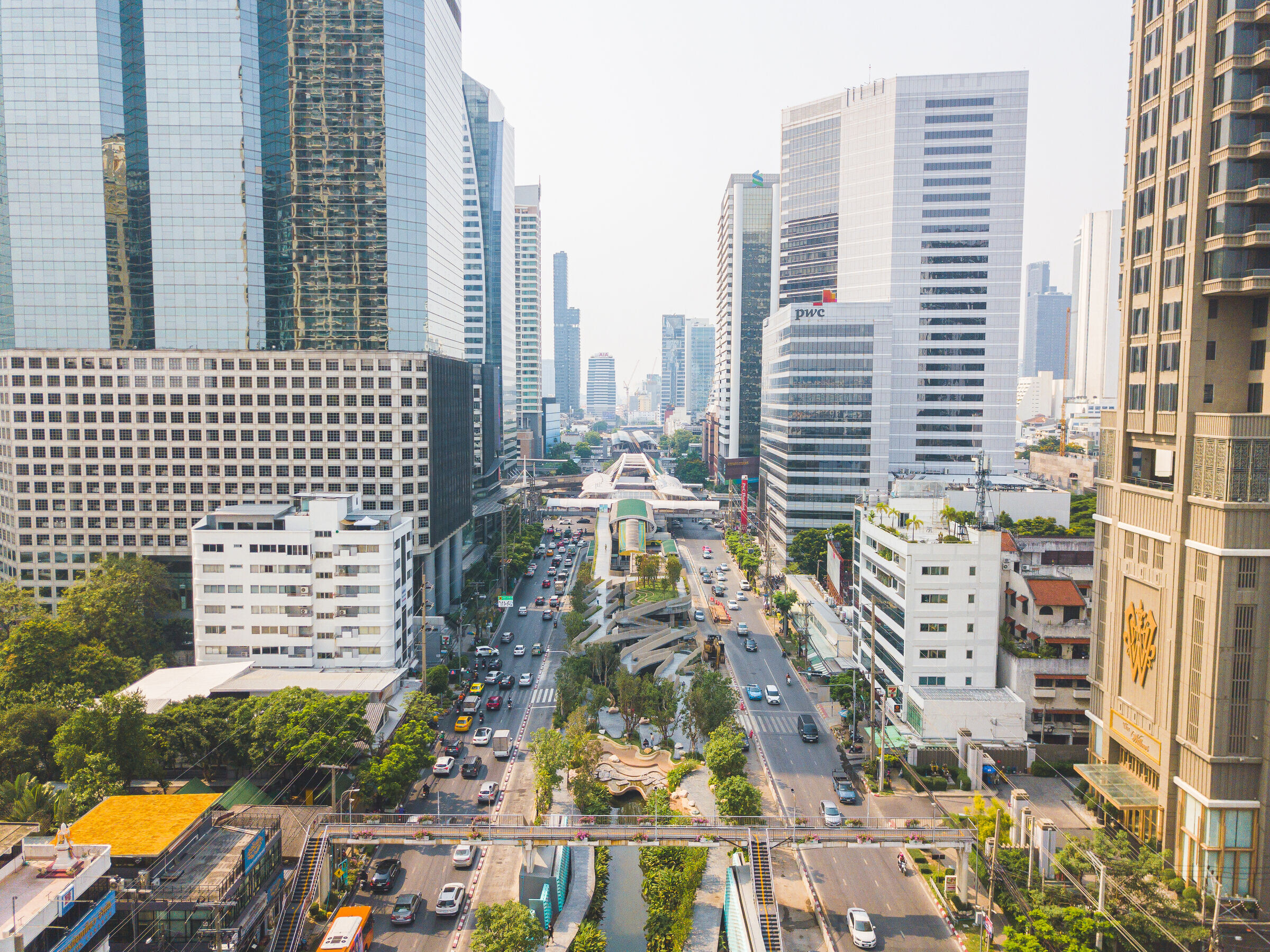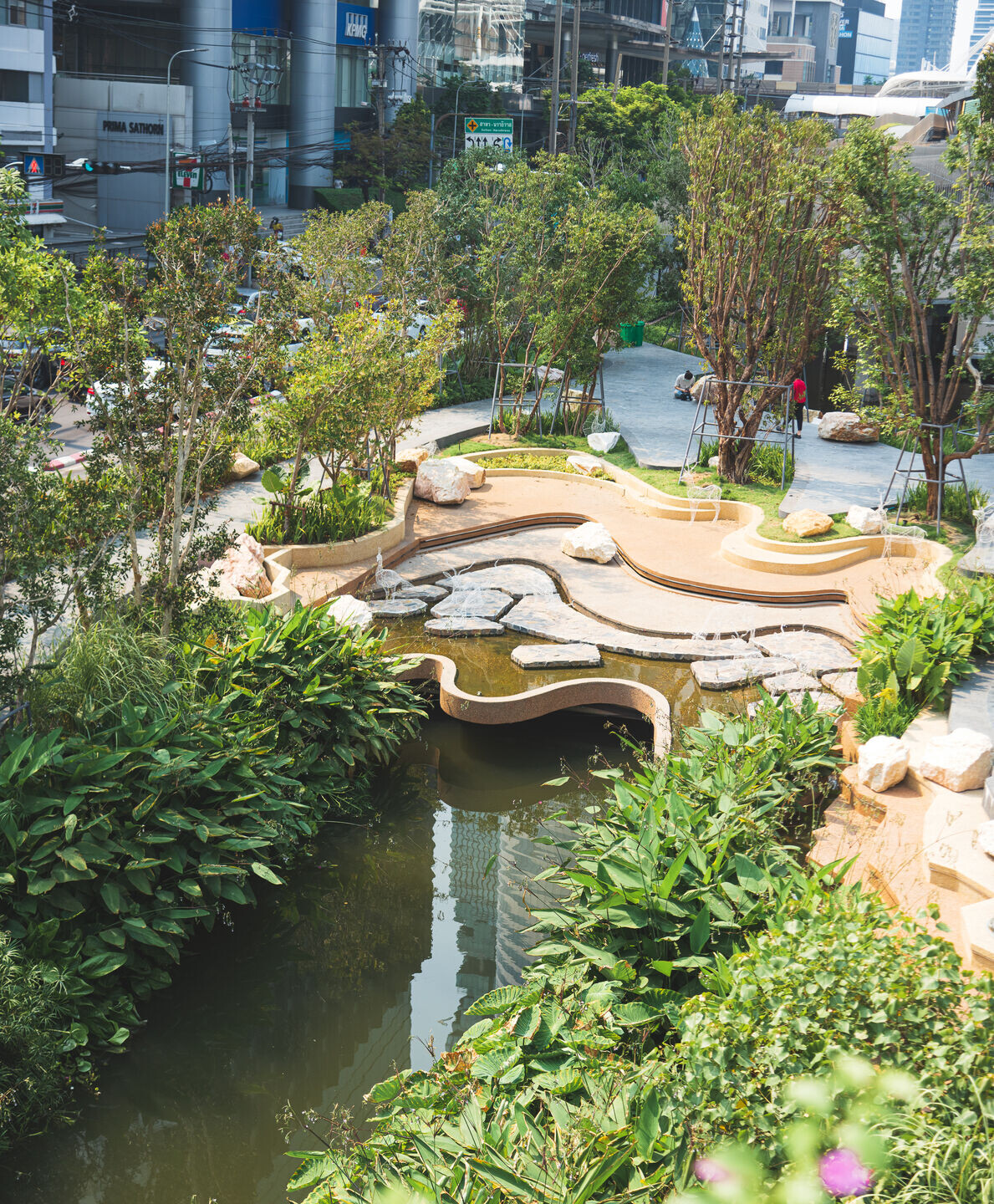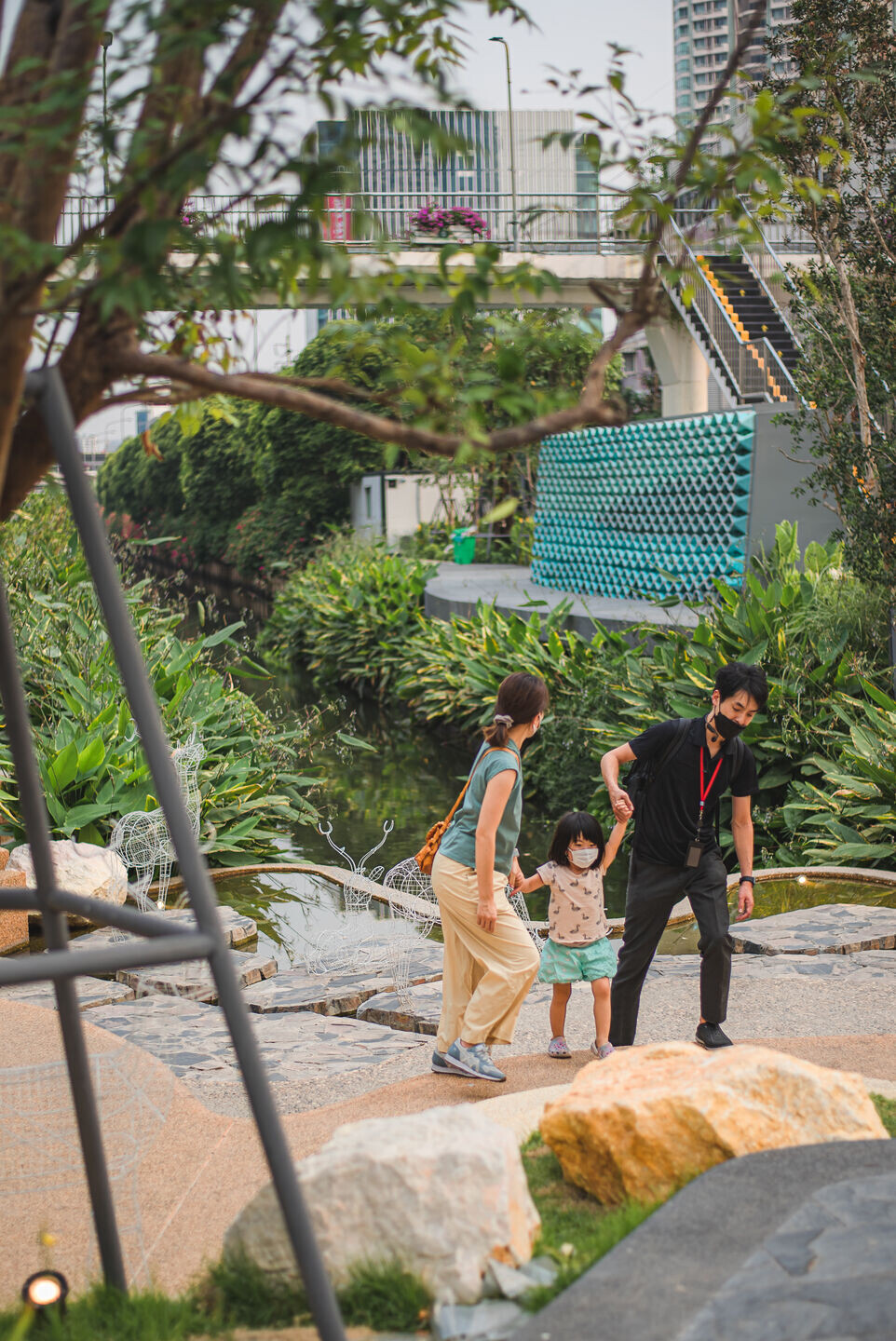The Chong Nonsi canal: The first canal as the blue-green infrastructure public space at the heart of Bangkok.
Once known as the Venice of the East, the city of Bangkok was famous for its vast interconnected network of canals rich in life, brimming with culture and spiritual significance. When the first settlements in Bangkok were created, important communal hubs like temples and markets were built into the canal banks utilizing the canals as a primary means of transportation making them the lifeblood of the city.

Being in the tidal zone, the water levels in the Chao Phraya River and subsequently the connected canals frequently change in height, traditional Thai homes were built on stilts on the canal banks as the people lived in harmony with the changing water levels. Regrettably, the vibrant and harmonious blue-green spaces that once dominated that Bangkok cityscape are now but a distant memory.

The modern canal shares little resemblance to the canals of the past. Rapid urban development has pushed the city to fill in its waterways disconnecting canals from its neighboring communities causing a deterioration of its ecosystem services that the communities of Bangkok previously relied on. No longer receiving the regular flow of current it used to, the modern canal has become filled with stagnant sewage covered with grey infrastructure to hide the unsightly view.
At the current rate of carbon emissions and warming, the IPCC predicts global sea levels to rise 33cm by 2050 which in conjunction with Bangkok sinking at a rate of 2cm per year, due to the city being built on the soft alluvial soils of the Chao Phraya River delta, has caused the country to be named as one whose future is most at risk in the Global Climate Risk Index.

With a warming climate comes the increase in frequency and magnitude of extreme weather events that the city must be ready to face. The ever-growing nature of the city amplifies previously unresolved issues while also creating new challenges that the cities infrastructure must be able to adapt to.
The unfortunate reality
As Bangkok moved from using canals as the primary form of transportation favoring a car and road-based infrastructure, many canals have been filled in to make way for land-based development. Today, the canals that still exist are disconnected from the network of surrounding waterways through a series of flood gates used where water rarely flows though only being used for flood prevention.
The combination of stagnant water and the constant dumping of sewage and wastewater into the canals have compounded to create a serious pollution problem that has not been adequately addressed.

The Blue-Green vision
Connecting the CBD to residential neighborhoods, the 4.5 km Chong Nonsi,. the canal is infamous for its dirty water and presents a unique opportunity to reimagine the role of canals in 21st-century Bangkok.

The Chong Nonsi Canal Park project set out to integrate a public space into the canal and apply nature-based solutions to restore ecosystem services that were once a staple of life in Bangkok. The project is a paradigm shift in the way we interact with our environment and is the first of five ambitious projects to Regenerate Bangkok with the goal of reconnecting ecological communities and integrating blue-green spaces into the grey cityscape creating a resilient infrastructure capable of facing the threats of climate change.

Focusing on these key areas has ensured the success of the project in its mission of revitalizing the Chong Nonsi canal by restoring ecosystem services and improving public welfare. Critically we must not become complacent with the success of one project as the Chong Nonsi Canal Park is merely the start of a difficult journey in rebuilding the cities infrastructure necessary for a resilient blue-green Bangkok embracing the city’s rich history and reclaiming the name “The Venice of the East”





































